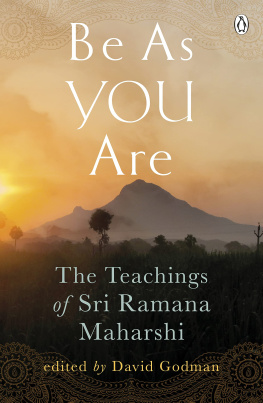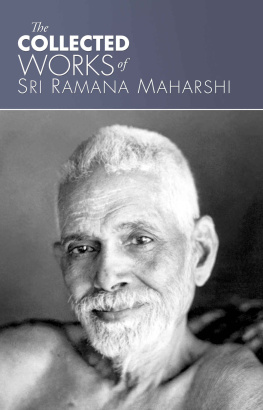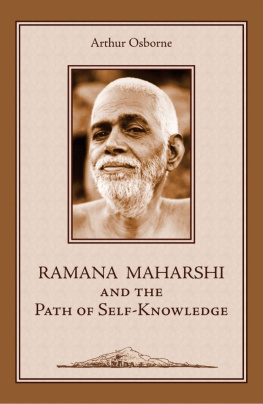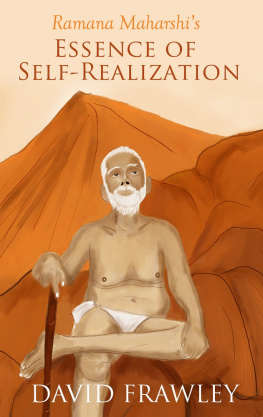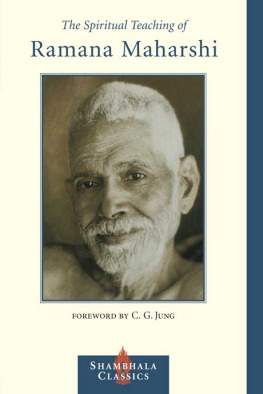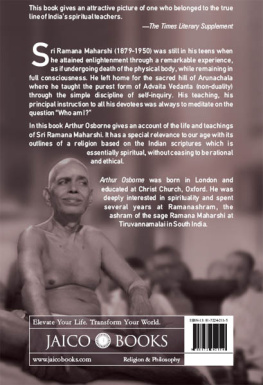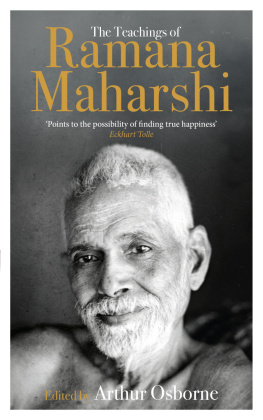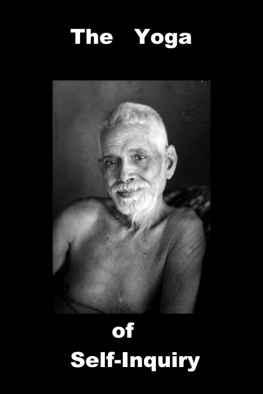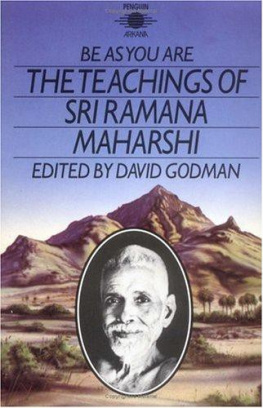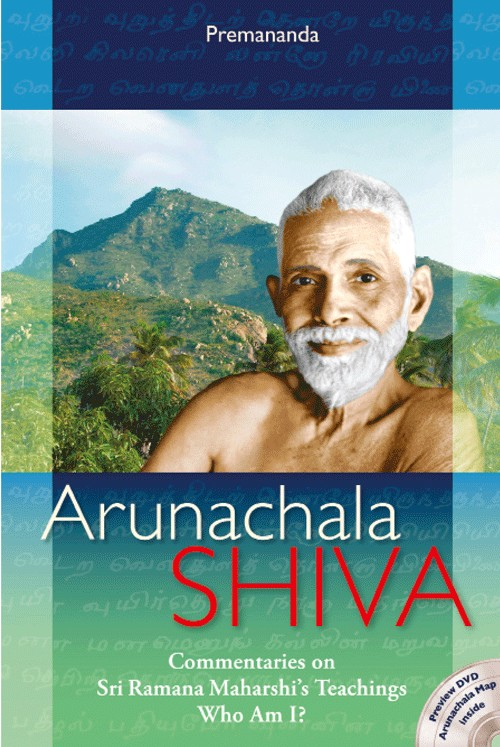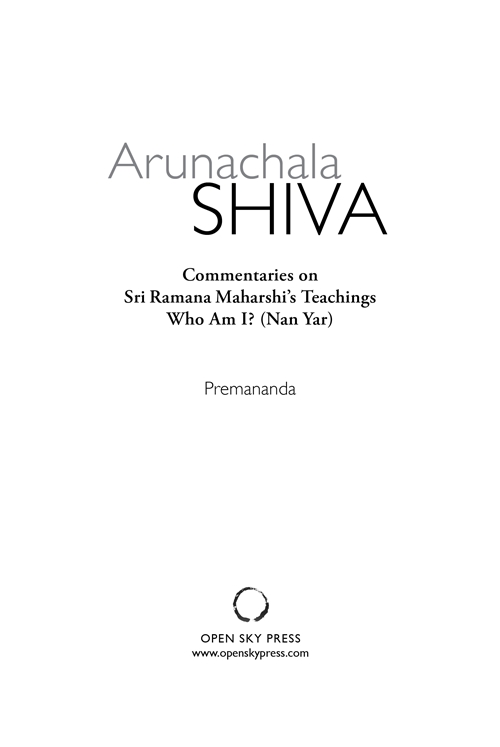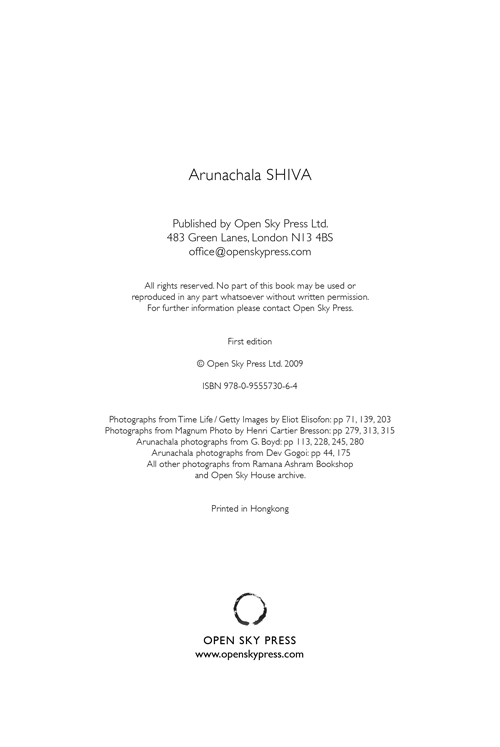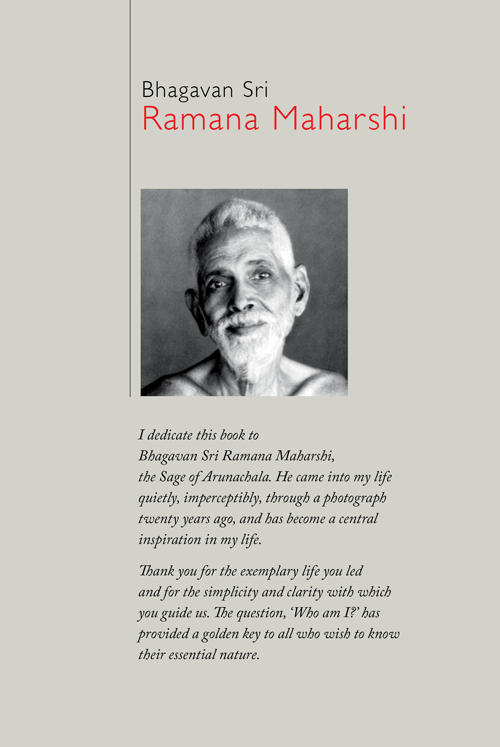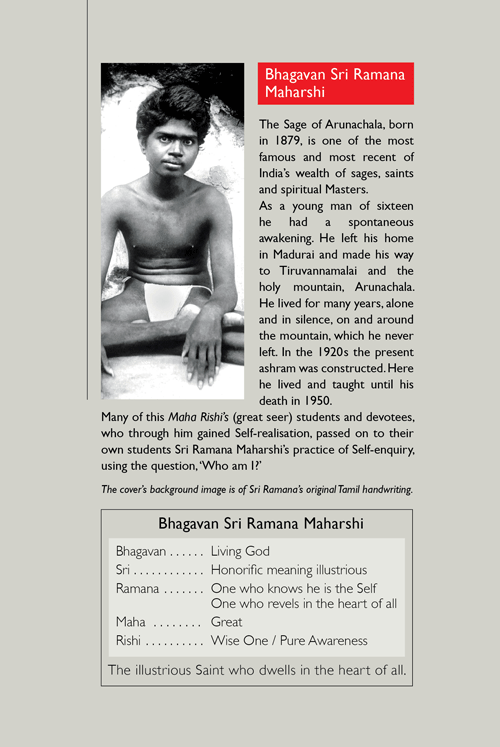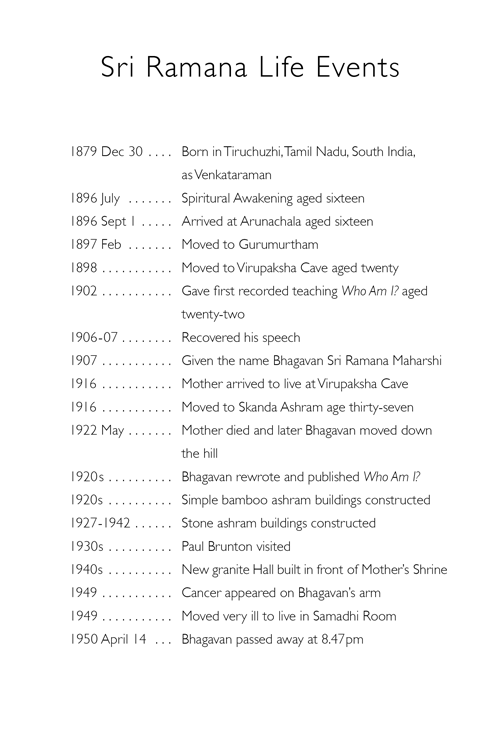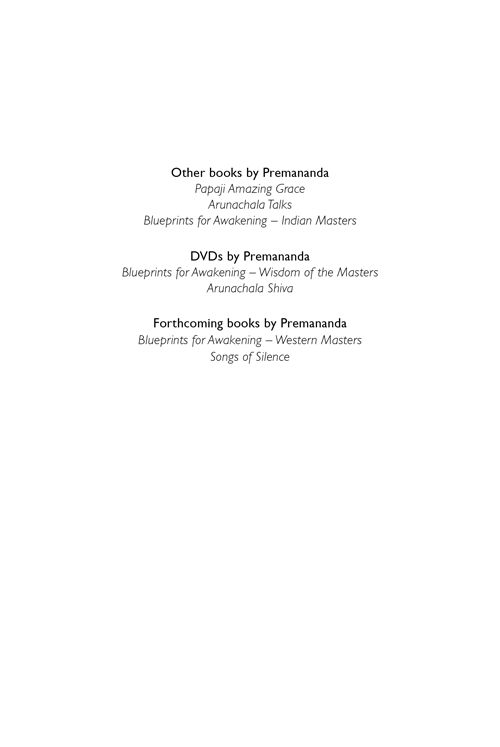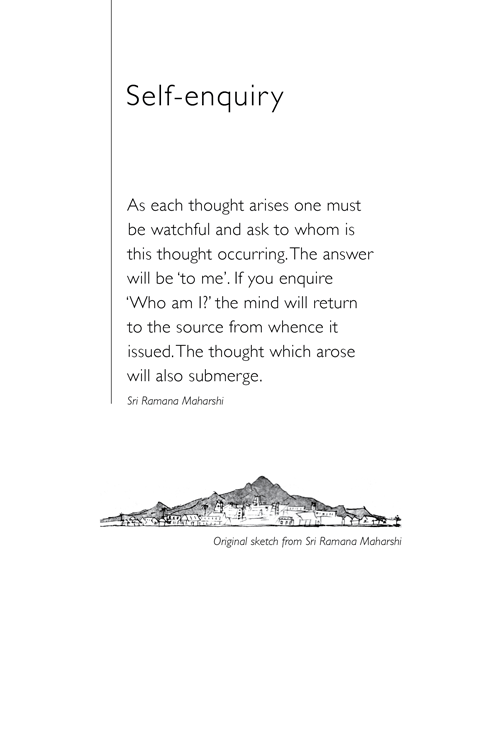Acknowledgements
I owe an enormous debt of gratitude to my two direct Masters, Osho and Papaji. Without my twenty years sitting at their feet this book could not exist. Sri Ramana Maharshi came into my life quietly and invisibly, gradually becoming my main inspiration and guide. I particularly thank him as this book is offered in homage to his exemplary life and for making the ancient teachings available to us in contemporary language.
I am particularly indebted to David Godman for sharing his wealth of knowledge, gathered over thirty years, about all aspects of Sri Ramana. I am also indebted to James Swartz for his wonderful introduction to Vedanta and the many hours we spent together in fascinating conversation. These dialogues and interviews were made in 2002 during a retreat year I spent in Tiruvannamalai. In addition I would thank David and James for their patience as the years passed.
An interview or dialogue is a spontaneous and unique conversation. My thanks to Kali Devi for her sensitive editing of the interview transcripts, accurately produced by Dev Gogoi and Sathya from the original recordings. Also to Kali Devi for patiently proof reading the manuscript over and over again and for the invaluable day-to-day support she gave to the whole team, and particularly to me. To Mahima and Darshana who, while translating this book into German, added some final proofing touches.
I should like to thank Sri V.S. Ramanan, president of Sri Ramana Ashram, for permission to use photographs of Sri Ramana and the Ashram available from the Ashram shop. To Kali Devi and Darshana who have taken the majority of the recent photos of Ramana Ashram and around Arunachala. To Dev Gogoi and to Graham Boyd for their fine photographs of Arunachala. To Cartier-Bresson for his timing to be there as Sri Ramana left his body and to Welling for his classic photograph that graces the cover.
To Parvati and Darshana for the graphic design of the numerous art pages and to Parvati for her graphic advice with the cover design. Thank you Parvati for the wonderful map. Also to Darshana for the fine editing of the Preview DVD and the amazingly beautiful DVD Film Arunachala Shiva, available separately.
My heart-felt thanks to all the residents of the Open Sky House Community for giving such loving, energetic support, creating a space for all those working actively on the book. Finally my deep thanks and appreciation to Parvati, the director of Open Sky Press, for her painstakingly careful work formatting the book.
Premananda 2009
Published by Open Sky Press, Smashwords Edition
Table of Contents
Introduction
Arunachala Shiva is my homage to the spiritual greatness of Bhagavan Sri Ramana Maharshi who awakened to his true nature in 1896 at the age of sixteen. A few weeks after this event he left home and made his way to Arunachala, a holy mountain in Tiruvannamalai, South India, which is reputed to be Shiva himself. Sri Ramana spent his whole life living on the mountain, which he took to be his Master. He is considered by most spiritual adepts to be one of the greatest Indian Sages of our times.
Sri Ramanas small booklet Who Am I? (Nan Yar) contains the core of his teachings with a focus on Self-enquiry. This booklet grew out of a meeting between Sri Ramana and a spiritual seeker who had a burning desire to find the answer to his question, Who am I? Although Sri Ramana had not studied the scriptures when he first answered the questions, it is a spiritual classic that is in line with both the Vedanta and Yoga traditions. He answered the questions posed to him that day from the Self, reflecting the ancient wisdom of India and the contemporary wisdom of his time.
There is no doubt that the importance Sri Ramana gave to Self-enquiry as the most direct route to Self-realisation has attracted enormous attention from serious Western seekers of Truth in the last years. It is not only his teachings which have attracted attention but also his exemplary lifestyle and the sattvic (quiet and peaceful) nature of his mind, which is reflected in the architecture of his ashram, which he designed. Thousands of Western seekers visit the ashram every year to stay for some days in the simple but glorious peace of that place. It is always a delight to sit on the red clay floor, eating, with ones own hand, the delicious vegetarian food which is served from buckets onto a banana leaf plate.
This silent atmosphere of the ashram can be felt in the one hundred photographs on the thirty-six colour art pages. They i Sri Ramanas life from the earliest photo of him, aged twenty-one or two, to his death in 1950. Several relatively unknown photographs have been obtained, including the two photographs taken by the famous French photographer, Cartier-Bresson, on the days before and just after Sri Ramanas passing. The photographic pages also chart the development of Ramana Ashram from its beginnings right through to today, and they introduce us to some of the people who were fortunate to spend time with Sri Ramana. The beauty of Sri Ramanas guru, Arunachala, Shiva incarnate, graces every page.
The first steps of this book were taken in 1992 while I stayed in the room next to David Godman at Ramana Ashram. He was kind enough to explain Self-enquiry to me and to introduce me to Sri Lakshmana Swamy, one of the last living direct disciples of Sri Ramana. Later David was also part of the large community of Westerners living around Papaji in Lucknow. On Papajis birthday in September 2000, he was happy to give the interview about his life and his relating with Papaji. His story is a classic example of how a Master does his real work. Later, in 2002, we recorded the interviews about Sri Ramanas Life, Teaching and Devotees. At that time he also offered me his commentary on Who Am I? and supported this project by having the interviews on his website. As the material was so compelling I decided to continue with its publication even though it has taken me several years.
In the same period in 2002 I stayed in Tiruvannamalai on a personal retreat and it was then that I met James Swartz. Most evenings he could be found in a local restaurant holding forth to a rapt audience his views on


